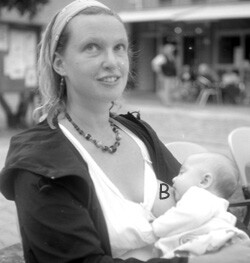Our students arrive at school with vastly different levels of preparation for the rigors of kindergarten. These children, in their first few months, will have to pass tests showing they know their alphabet and number system, and soon will be on their way to real academic work, choosing among a number of options on a test.
For example, the New York Times reports that four year olds need to pass multiple choice tests to gain entrance to the city’s public GATE kindergarten program. A typical question showed the children a picture of a slice of cake and a whole cake, and a picture of a loaf of bread. Which picture went with the loaf of bread the same way?
The ignorant four-year-old in the story was unable to answer this question. “Too hard,” she is reported to have whined.
Fortunately, parents are stepping in to enroll their students in programs to prepare them for this rigorous thinking. The only misfortune is that this type of preparation is not available to all.
But we have a great opportunity, with the spreading of the internet, to make such opportunities more widely available. Parents need to understand that after all, life IS very much like a multiple choice test. When I get up in the morning, I have four pairs of shoes from which to choose. Which pair will go with the blue pants I plan to wear? If I choose brown, then I am in trouble! At the grocery store, which brand of soda should I buy? Again, I have options I must choose from. Everywhere we look, we have multiple choices!
What is missing is the label. If only it was transparent that we are making these choices! I have invented a simple kit that will be made available to parents at a nominal cost. The kit consists of a set of lettered stickers that can be easily affixed on all objects and choices available to the children. For example, in the morning, orange juice, apple juice, milk and water will all be offered to the child. But before he gets a sip, he must darken the appropriate bubble. The under five group can use crayons, but by six years of age, the child can graduate to a proper number two pencil.
TV channels can be similarly labeled. Spongebob is A, Sesame Street is B, Hannah Montana is C, and so on. Want to watch, you have to bubble your choice!
Then we get to the more advanced thinking. Analogies are critical to the young mind, clearly, since they feature so prominently on all these tests. To supplement the letter stickers, I have prepared a set of NUMBER stickers that can be placed on objects as well. All appliances in the kitchen should be lettered. Then all toys should be numbered. Which toy is like a refrigerator? Which toy is like a sink? Children should be required to explain how their toy is like an appliance before they are allowed to play with it. This provides them with the critical skill of making analogies.

The children can learn! We must have the highest expectations of them all. We have allowed them to frolic in ignorant post-natal bliss for far too long. Child labor laws and the rise of the middle class in the industrial revolution is credited with the invention of childhood, but we are now in a post-industrial economy, and knowledge workers are what is needed. Childhood is a luxury we can no longer afford. Who is to say that these little minds are not able to work? I say, there is no time too early for the infant to learn. A dedicated mother I know has labeled her breasts A and B, and before breastfeeding asks the little nipper to make a choice. He is too young to fill in the bubble, but not too young to make a choice! He will have a big head start on life as a result.
What do you think? What have you done to prepare your toddler for the multiple choices ahead?
Creative Commons image by Matteo Bagnoli.